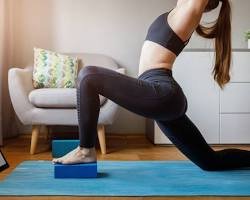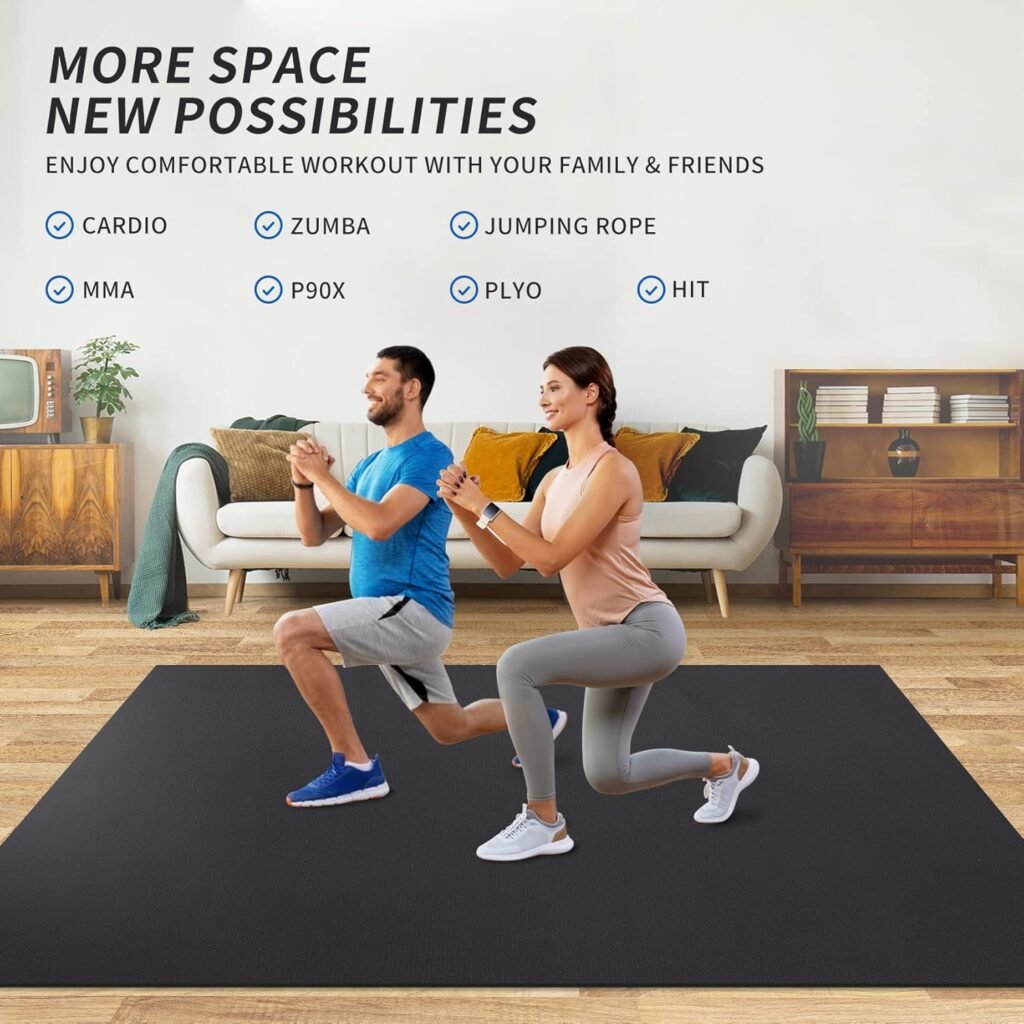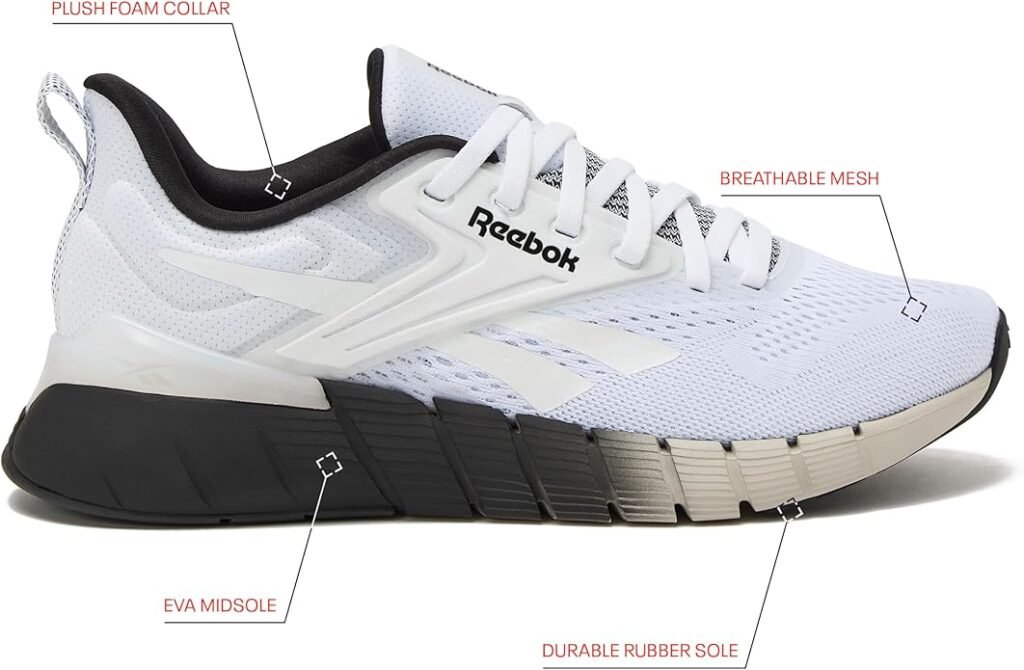The rise of at-home fitness is one of the best things to happen to personal wellness. The freedom to roll out of bed and get a great workout in your own space, on your own time, without a commute or a crowd, is a true game-changer. This newfound autonomy allows you to connect with your body in a comfortable, judgment-free zone. But with this amazing convenience comes a profound new responsibility: becoming your own safety supervisor, personal trainer, and biggest advocate.
These essential at-home workout safety tips are your comprehensive blueprint for success. Without the watchful eye of a certified trainer to correct your form or the controlled environment of a professional gym, it’s remarkably easy to develop bad habits. These small, seemingly insignificant missteps can quietly compound over time, leading to nagging injuries that derail your progress and diminish your motivation.
This guide will go beyond the basics, offering an in-depth look at the crucial steps and mindsets needed to ensure every single home workout is not only effective but fundamentally safe. Think of this not as a list of rules, but as a masterclass in building a sustainable, intelligent, and joyful fitness practice that will serve you for years to come.

Table of Contents
1. Create a Dedicated (and Conducive) Workout Space
One of the first and most impactful rules of at-home workout safety is to consciously manage your environment. You wouldn’t run on a cluttered treadmill, so you shouldn’t perform dynamic movements in a space littered with potential hazards.
The Psychology of a Dedicated Space
Beyond the physical safety aspect, creating a designated workout zone has powerful psychological benefits. When you consistently use the same corner of your living room or spare bedroom for exercise, your brain begins to build a strong association. Stepping into that space becomes a mental trigger, signaling to your mind that it’s time to switch from “rest” or “work” mode into “focus and fitness” mode. This simple ritual can dramatically improve your focus and the overall quality of your workouts.
Your Pre-Workout Safety Sweep Checklist
Before you begin your warm-up, take 60 seconds to perform a quick safety sweep of your area.
- Flooring: Are you on a stable, non-slip surface? If you’re on a hardwood floor, consider an exercise mat for grip. If you’re on a rug, make sure it’s not a loose throw rug that could slide out from under you during a lunge or plank.
- Horizontal Space: Clear the floor of any and all obstacles—toys, pet beds, shoes, laptops, or coffee tables with sharp corners. Perform a “wingspan check” by standing in the center and extending your arms out to the sides and front, ensuring you have a clear buffer zone.
- Vertical Space: Look up. Are you positioned under a low-hanging light fixture or ceiling fan? Perform a few small jumps to ensure you have adequate vertical clearance for exercises like jumping jacks or burpees.
- Ventilation: Is there good airflow? Cracking open a window can not only keep you cool but also improve air quality, helping you feel more energized throughout your session.
The single best investment for your workout space is a high-quality, non-slip exercise mat . It solves the problem of slippery floors, provides essential cushioning for your knees, back, and wrists during floor exercises, and mentally reinforces your dedicated fitness zone.

2. Always Prioritize Your Warm-Up and Cool-Down
If your workout is the main course, your warm-up is the appetizer and your cool-down is the dessert. They are not optional extras; they are integral parts of the complete meal. Skipping them is the fitness equivalent of reading a book but skipping the first and last chapters.
The Science of a Smart Warm-Up
A warm-up is a gradual ramp-up that prepares your body for the demands to come. The goal is to use dynamic stretches—active, flowing movements—to wake up your systems. Here’s what’s happening inside your body:
- Cardiovascular System: Your heart rate gradually increases, pumping oxygen-rich blood to your muscles.
- Musculoskeletal System: Your muscle temperature rises, making muscle fibers more pliable and less susceptible to tearing. Your joints produce more synovial fluid, which is like a natural lubricant that allows for smoother, less abrasive movement.
- Nervous System: Your brain “wakes up” the neural pathways to your muscles, improving coordination and reaction time.
The Science of an Effective Cool-Down
A cool-down is the gentle off-ramp your body needs to transition from a state of high stress to a state of rest. The goal is to use static stretches—holding a stretch without movement—to relax and lengthen muscles.
- Cardiovascular System: It allows your heart rate and blood pressure to decrease gradually. Stopping abruptly can cause blood to pool in your legs, leading to dizziness.
- Nervous System: It signals a shift from the sympathetic nervous system (“fight-or-flight”) to the parasympathetic nervous system (“rest-and-digest”), which is essential for initiating the recovery process.
- Muscular System: Stretching while your muscles are still warm and pliable is the most effective way to improve long-term flexibility and helps flush out metabolic byproducts.
For a perfect routine, check out our in-depth guide: [Link to your article on warming up and cooling down].
3. Master Proper Form Before Adding Intensity
This is the golden rule of fitness, and it is exponentially more important when you are working out alone. It is far more beneficial to do five perfect, controlled squats than 20 sloppy, rushed ones. Poor form not only negates the effectiveness of an exercise, but it also places undue stress on the wrong joints and tissues, making injury almost inevitable.
Your Three Best Friends for Perfect Form
- The Mirror: Working out in front of a mirror isn’t about vanity; it’s about data. It provides immediate visual feedback. For a squat, you can check: Are my knees caving inward? Is my chest staying up? Is my back flat?
- Your Smartphone: Prop your phone up and record yourself performing a few reps of a difficult exercise. You will be amazed at what you see. This objective view can reveal subtle form breakdowns you would never feel otherwise.
- Your Proprioception: This is your internal sense of your body’s position in space. Cultivate this by moving slowly and deliberately. Ask yourself during a push-up: Do I feel this in my chest and triceps, or am I straining my neck? Am I keeping my core tight like a plank? Quality of movement always trumps quantity of reps.
A Summary of Key At-Home Workout Safety Tips
To build a routine that lasts, you need a strong foundation. This checklist summarizes the most important at-home workout safety tips to keep in mind every time you exercise:
- Clear Your Space
- Warm-Up & Cool-Down
- Prioritize Form
- Listen to Your Body
- Wear Proper Gear
- Stay Hydrated
- Schedule Rest
4. Listen to Your Body (It Knows Best)
Without a coach present to see your grimace or tell you to slow down, you must become an expert at interpreting your body’s signals. Learning to differentiate between productive muscular discomfort and genuine pain is a skill that will protect you for a lifetime.
Good Pain vs. Bad Pain
- Good Pain (Productive Discomfort): This feels like a burning sensation or fatigue in the belly of the muscle you are targeting. It’s the feeling of your muscles working hard and creating change. It typically subsides shortly after you stop the exercise.
- Bad Pain (Warning Signal): This is often sharp, stabbing, or shooting. It can be located in or around a joint (knee, shoulder, lower back). Numbness, tingling, or a feeling of instability are also red flags. Never push through bad pain. Stop the exercise immediately.
Use the RPE Scale
The Rate of Perceived Exertion (RPE) is a simple 1-10 scale to gauge your intensity. It’s a perfect “unplugged” tool. 1 is sitting on the couch, and 10 is the absolute maximum effort you could possibly give. For most workouts, aiming for an RPE of 6-8 is a great target. If a workout video is pushing you to a 9 or 10 and you feel your form breaking down, it’s your job to scale back.
5. Choose the Right Gear (and Use It Correctly)
You don’t need a lot of fancy gear for a great home workout, but what you do use matters significantly for both safety and effectiveness.
Footwear is Your Foundation
- Supportive Shoes: For any workout involving jumping or dynamic movement (HIIT, cardio), supportive athletic shoes are crucial. They absorb impact, protecting your ankles, knees, and hips.
- Flatter Shoes: For strength training like squats and deadlifts, a flatter, more stable shoe (like a cross-trainer) can provide a better connection to the floor.
- Barefoot Training: Working out barefoot can be excellent for strengthening the small muscles in your feet, but it’s best reserved for low-impact exercises like yoga, Pilates, or specific bodyweight movements on a non-slip surface.
Equipment Inspection
- Resistance Bands: Before every use, give your bands a quick scan for any tiny nicks, tears, or signs of wear, especially near the handles. A snapping band can cause serious injury.
- Weights: If you use dumbbells, ensure the collars are tight. If you’re using household items, double-check that they are sturdy and that caps are screwed on tight.
For most at-home workouts that include a mix of strength, cardio, and lateral movements, a good pair of versatile cross-training shoes is your safest bet. They provide stability for squats and lunges, and the right amount of support for dynamic exercises.

6. Hydrate, Hydrate, Hydrate
Just because you’re at home with the A/C on doesn’t mean you’re not losing significant fluid through sweat and respiration. Dehydration is a performance killer and a safety risk.
Why Hydration Matters
When you become dehydrated, your blood volume decreases. This means your heart has to work harder to pump blood to your muscles, your body can’t cool itself effectively, and your muscles are more prone to cramping. Even mild dehydration can lead to fatigue and dizziness, which is when form gets sloppy and injuries happen.
A Simple Hydration Strategy
- Throughout the Day: Don’t try to chug a bottle of water right before your workout. Aim for consistent sipping all day long. A general rule of thumb is to drink about half your body weight (in pounds) in ounces of water per day.
- During Your Workout: Keep a water bottle in your workout space and take small sips between sets or exercises.
- After Your Workout: Rehydrate to replenish the fluids you lost.
7. Know When to Rest and Recover
More is not always better. In fact, a relentless “no days off” mentality is one of the most dangerous trends in fitness. Your muscles don’t get stronger during the workout; they get stronger when they repair and rebuild themselves in the time between your workouts.
The Pillars of Smart Recovery
- Sleep: This is your number one recovery tool. During deep sleep, your body releases growth hormone, which is essential for repairing muscle tissue. Aim for 7-9 hours of quality sleep per night.
- Nutrition: Ensure you’re fueling your body for repair. Consuming a mix of protein (the building blocks for muscle) and carbohydrates (to replenish energy stores) within a couple of hours after your workout can significantly aid recovery.
- Rest Days: Schedule at least 1-2 dedicated rest days per week. A rest day can be complete rest or “active recovery,” which involves light activity like a gentle walk, stretching, or a foam rolling session. This keeps blood flowing to the muscles to aid recovery without adding more stress.
### What is the single biggest safety mistake people make at home?
By far, the biggest and most common mistake is sacrificing proper form for speed or intensity. At home, without a trainer to correct you, it’s easy to let your form get sloppy as you get tired. This is the root cause of most workout-related injuries. Always remember: five perfect reps are infinitely better and safer than 15 rushed, improper ones.
### How do I know if I’m just sore or actually injured?
This is a crucial distinction. Here’s a simple guide:
- Muscle Soreness (DOMS): Usually feels like a dull, generalized ache in the belly of the muscle. It tends to appear 24-48 hours after a workout, often affects both sides of the body (e.g., both legs), and typically feels a bit better with light movement and stretching.1
- Injury-Related Pain: Is often sharp, stabbing, or shooting.2 It’s frequently located in or around a joint (knee, shoulder, ankle), may be on only one side, and usually feels worse with movement.3 If pain is sharp or doesn’t go away after a few days of rest, it’s best to consult a professional.
Frequently Asked Questions (FAQ)
1. Do I still need to worry about safety if I’m only doing bodyweight exercises?
Yes, absolutely! While the risk of dropping a weight is gone, the risk of joint or soft tissue injury from poor alignment remains. For example, doing squats with your knees caving inward can still strain your knee ligaments, and performing planks with a sagging back can lead to lower back pain, all without any external weight. Form and control are just as important in bodyweight training.
2. What is the safest way to follow online workout videos?
Online trainers are a fantastic resource, but it’s important to be a smart participant.
- Watch First: If it’s a new or complex move, watch the instructor demonstrate it a few times before you try it yourself.
- Choose Reputable Trainers: Follow certified and experienced professionals who prioritize explaining how to do a move correctly.
- Don’t Be Afraid to Modify: Use the modifications they offer. If they don’t offer one, create your own (e.g., do push-ups on your knees, use a chair for support).
- Press Pause: Never sacrifice your form to keep up. If you need a moment to get it right, pause the video.
3. How do I stay safe working out with pets or kids at home?
This is a real-world challenge! The key is to create a safe zone. If possible, work out in a separate room with a closed door. If that’s not an option, try to schedule your workouts when kids are sleeping or otherwise occupied. For pets and toddlers, creating a physical barrier with a baby gate can be very effective. Always be mindful of your surroundings to avoid tripping over a child or a curious pet.
Safety is the Ultimate Act of Self-Care
Viewing these at-home workout safety tips not as a restrictive list of rules but as an empowering framework is the key to long-term success. Safety is not about limiting what you can do; it’s about creating a sustainable practice that allows you to show up consistently, get stronger progressively, and build a positive, lifelong relationship with movement.
By creating a safe space, listening to your body’s wisdom, and mastering the fundamentals, you are building a fitness routine that will support your health, honor your efforts, and carry you toward your goals for years to come.
What is the #1 safety tip you are going to focus on more during your workouts this week? Share your commitment in the comments below!